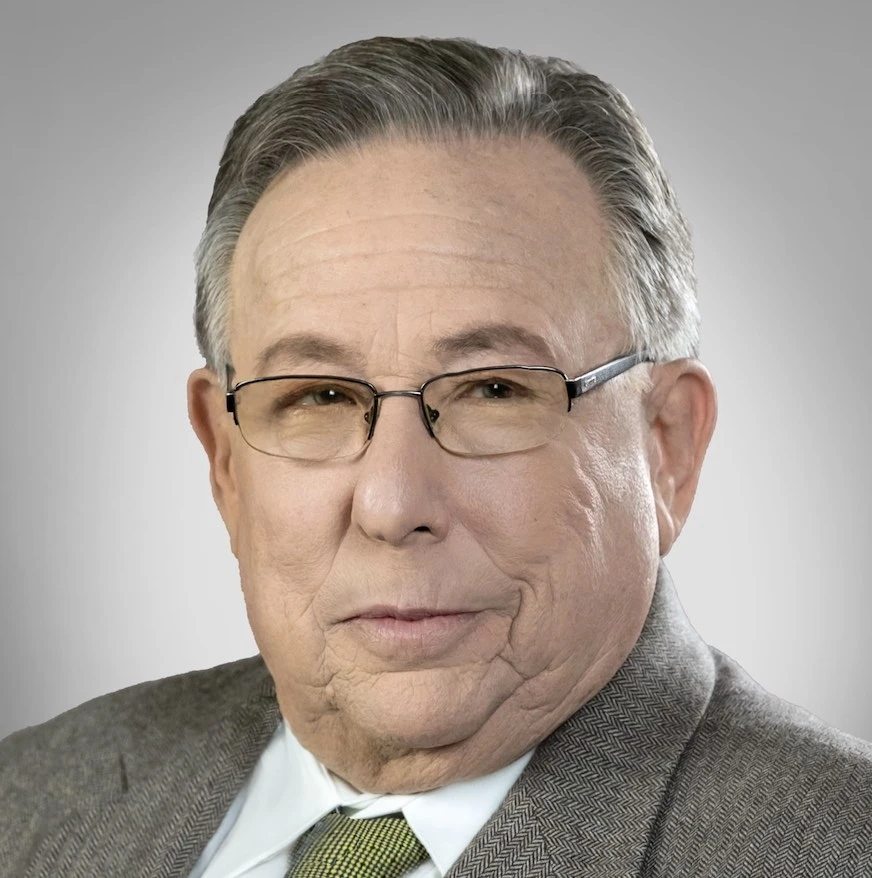The common notion about drug abuse often centers on the user’s inability to quit, which oversimplifies the complexity of this issue.
In most cases, patients undergoing recovery treatment experience mental/physical illness as a consequence of substance use disorder (SUD), which is known as co-occurring disorders (CODs), suffered by around 21.5 million adults in the United States.
Understanding and proper management of a co-occurring disorder is vital not only for the user’s well-being but also because they are important public health concerns, as drug use is a major cause of the HIV epidemic and hepatitis C infection in the country. Keep reading to learn about substance abuse and the health disorders associated with it.
Table Of Contents
What are Co-Occurring Disorders?
Co-occurring disorder is a medical term often confused with “dual diagnosis.” While in both cases, patients are suffering simultaneously from illnesses besides substance abuse, they differ in their origins and causes.
Disorders can co-occur as a result of prolonged substance abuse, leading to physical diseases such as HIV, AIDS, hepatitis C, diabetes, and heart disease, as well as COD mental health problems like anxiety, psychosis, depression, and bipolar disorder. Dual diagnosis, on the other hand, refers to the previous presence of an untreated mental health disorder that may have led to the substance use disorder.
7 Medical Implications Between Co-Occurring Disorders and Drug Abuse
Depending on the drug and the duration of use, the repercussions of substance abuse can vary in severity, affecting physical and mental health, relationships, work and well-being. Let’s focus on seven examples of illnesses that can happen as a result of drug abuse.
-
HIV and Hepatitis (and other STIs)
Abuse of intravenous drugs like heroin or engaging in risky sexual behaviors while under the influence increases the risk of contracting HIV, hepatitis and other sexually transmitted infections (STIs).
Considering that injection drug use accounts for one-third of all AIDS cases in the United States, over half of new HIV infections and half of new hepatitis C infections, it is usual for treatment centers to run or refer to HIV and hepatitis antibody testing before admission.
-
Cardiovascular and Gastrointestinal Problems
Many illicit drugs like cocaine, methamphetamine and opiates have been linked to cardiovascular problems such as irregular heart rhythms, heart attacks, and hypertension.
Cocaine and methamphetamine have the strongest correlation with strokes, particularly hemorrhagic. Substances, such as alcohol, even in small doses, can be irritating to the digestive system, potentially leading to gastrointestinal issues like nausea, vomiting, and, in the worst-case scenario, bleeding.
-
Hormonal Imbalances
Chronic alcohol abuse, for example, can impair the function of the hypothalamus and pituitary gland, affecting the regulation of hormones such as cortisol, insulin and reproductive hormones. This imbalance can result in a range of health issues, including infertility, menstrual irregularities and sexual dysfunction.
-
Weight Fluctuations
Stimulant drugs like cocaine and methamphetamine may suppress appetite or alter nutrient absorption, leading to weight loss and malnutrition. As well, drug users usually prefer to spend money on drugs than food. On the other hand, drugs like alcohol and certain antidepressants may increase appetite and contribute to weight gain.
-
Substance-Induced Sexual Dysfunction
Even though there is still limited research on the effects of drugs on sexual dysfunction, recent studies show that substances like antidepressants, alcohol, and opioids can hinder sexual function, leading to erectile dysfunction, decreased libido and difficulty achieving orgasm.
-
Psychosis
Some drugs, particularly hallucinogens like LSD or PCP, and stimulants like methamphetamine or cocaine, can induce psychotic symptoms such as hallucinations, delusions, paranoia, and disorganized thinking. Prolonged substance abuse may exacerbate or trigger underlying mental health conditions, leading to psychosis in susceptible individuals.
-
Cancer
It is common knowledge that substances such as tobacco and alcohol are carcinogens, increasing the risk of developing various types of cancer.
Tobacco has at least 70 carcinogenic chemicals that may be the cause of around 15 types of cancers, including lung, throat and mouth cancers. At the same time, heavy alcohol consumption is associated with an increased risk of liver cancer and esophageal and breast cancers.
Common Examples of Co-Occurring Disorders
The following examples provide a snapshot of mental and physical co-occurring health conditions. The variety of co-occurring disorders extends beyond this list, and a diagnosis by a medical professional is vital for personalized assessment.
Physical Co-Occurring Health Conditions
- Heroin use: Higher HIV, hepatitis, and infection risk from needle sharing.
- Alcohol abuse: Suicide risk, liver disease and worsening depression risk.
- Opioid abuse: Respiratory depression, overdose, accidents and anxiety.
- Cocaine use: Manic/depressive episodes, cardiovascular issues and psychosis.
- Methamphetamine use: Psychosis, cognitive decline and cardiovascular issues.
- Marijuana abuse: Memory impairment, PTSD, anxiety and cancer risks.
- Tobacco abuse: Increased cancer, respiratory diseases and sexual dysfunction.
Mental Co-Occurring Health Conditions
- Schizophrenia: Schizophrenia-like symptoms, such as hallucinations and delusions.
- Bipolar Disorder: Worsened mood swings and manic or depressive episodes.
- ADHD: Worsened ADHD symptoms, like impulsivity and inattention.
- Generalized Anxiety Disorder: Excessive worry and restlessness.
- OCD: Obsessive thoughts and compulsive behaviors.
- Panic Disorder: Triggered or worsened panic attacks.
- Antisocial Personality Disorder: Impulsivity and disregard for social norms.
- Cognitive Disorders: Impaired cognitive function, memory problems, difficulty concentrating.
Symptoms of Co-Occurring Disorders
Symptoms of co-occurring disorders can vary widely depending on the specific combination of substance use disorder and mental health condition.
Some common symptoms may include:
- Intense cravings or urges for the substance
- Mood swings or emotional instability
- Weight fluctuations
- Difficulty concentrating or making decisions
- Social withdrawal or isolation
- Changes in sleep patterns
- Increased tolerance to the substance
- Engagement in risky behaviors or impulsivity
- Experiencing withdrawal symptoms
- Hallucinations or delusions (in cases of severe mental illness)
- Loss of interest in activities once enjoyed
Co-Occurring Disorders − Treatment and Key Considerations
Treatment for co-occurring disorders requires an accurate diagnosis through screening conducted by qualified health professionals. Once diagnosed, treatment must address the psychological/physical health condition and substance abuse disorder.
A personalized approach combining different therapeutic techniques is most effective, including behavioral therapy, medication and support groups. For accurate information and guidance on drug abuse, addiction and available treatments, consult with experts and seek support using our free and confidential helpline.
People Also Ask
What is an example of a co-occurring disorder?
An example of a co-occurring disorder is alcoholism accompanied by liver disease, where excessive alcohol consumption leads to both the development of alcohol use disorder and liver damage concurrently.
What is a co-occurrence of disorders?
A co-occurrence of disorders refers to the simultaneous presence of a substance use disorder and another medical or mental health condition as a result of substance abuse.
What is the difference between co-occurring disorders and dual diagnosis?
Co-occurring disorders are health conditions that result directly as a consequence of substance abuse. In contrast, dual diagnosis involves a pre-existing mental health disorder potentially leading to substance abuse.
Page Sources
- 2022 National Survey on Drug Use and Health (NSDUH) releases. (n.d.). https://www.samhsa.gov/data/release/2022-national-survey-drug-use-and-health-nsduh-releases
- Co-Occurring disorders and other health conditions. (2024, February 1). SAMHSA. https://www.samhsa.gov/medications-substance-use-disorders/medications-counseling-related-conditions/co-occurring-disorders
- Sorensen, J. L., Masson, C. L., & Perlman, D. C. (2002). HIV/Hepatitis Prevention in Drug Abuse Treatment Programs: Guidance From Research. Science & Practice Perspectives, 1(1), 4-11. https://doi.org/10.1151/spp02114
- Esse, K., Fossati-Bellani, M., Traylor, A., & Martin-Schild, S. (2011). Epidemic of illicit drug use, mechanisms of action/addiction and stroke as a health hazard. Brain and Behavior, 1(1), 44-54. https://doi.org/10.1002/brb3.7
- Bode, C., & Bode, J. C. (1997). Alcohol’s Role in Gastrointestinal Tract Disorders. Alcohol Health and Research World, 21(1), 76-83. https://www.ncbi.nlm.nih.gov/pmc/articles/PMC6826790/
- Rachdaoui, N., & Sarkar, D. K. (2017). Pathophysiology of the Effects of Alcohol Abuse on the Endocrine System. Alcohol Research : Current Reviews, 38(2), 255-276. https://www.ncbi.nlm.nih.gov/pmc/articles/PMC5513689/
- Mahboub, N., Rizk, R., & Karavetian, M. (2021). Nutritional status and eating habits of people who use drugs and/or are undergoing treatment for recovery: A narrative review. Nutrition Reviews, 79(6), 627-635. https://doi.org/10.1093/nutrit/nuaa095
- Grover, S., Mattoo, S. K., Pendharkar, S., & Kandappan, V. (2014). Sexual Dysfunction in Patients with Alcohol and Opioid Dependence. Indian Journal of Psychological Medicine, 36(4), 355-365. https://doi.org/10.4103/0253-7176.140699
- Fiorentini, A., Cantù, F., Crisanti, C., Cereda, G., Oldani, L., & Brambilla, P. (2021). Substance-Induced Psychoses: An Updated Literature Review. Frontiers in Psychiatry, 12. https://doi.org/10.3389/fpsyt.2021.694863
- Tobacco and Cancer | CDC. (n.d.). https://www.cdc.gov/cancer/tobacco/index.htm
- Jun, S., Park, H., Kim, J., Choi, E. J., Lee, H. A., Park, B., Lee, S. Y., Jee, S. H., & Park, H. (2023). Cancer risk based on alcohol consumption levels: A comprehensive systematic review and meta-analysis. Epidemiology and Health, 45. https://doi.org/10.4178/epih.e2023092

 Authored by
Authored by  Reviewed by
Reviewed by 
